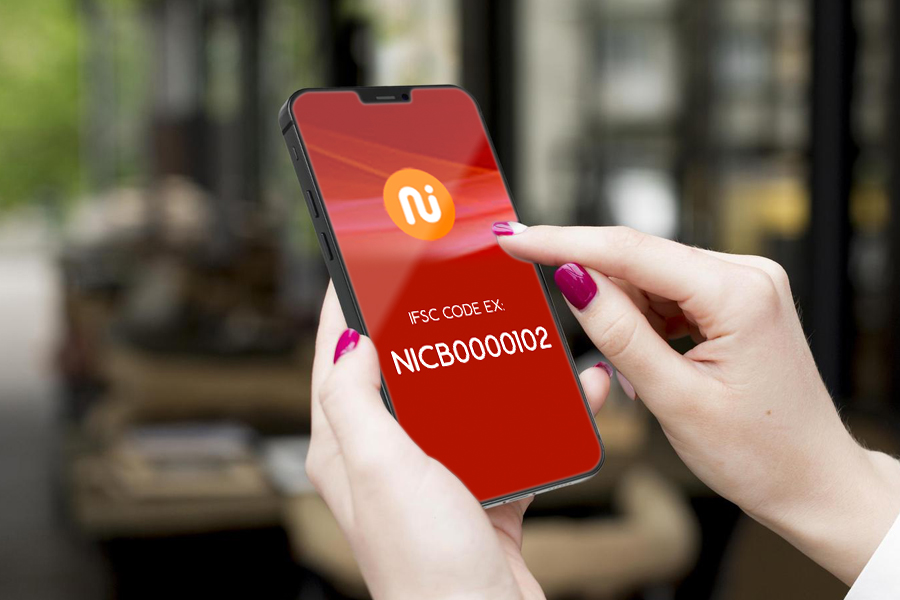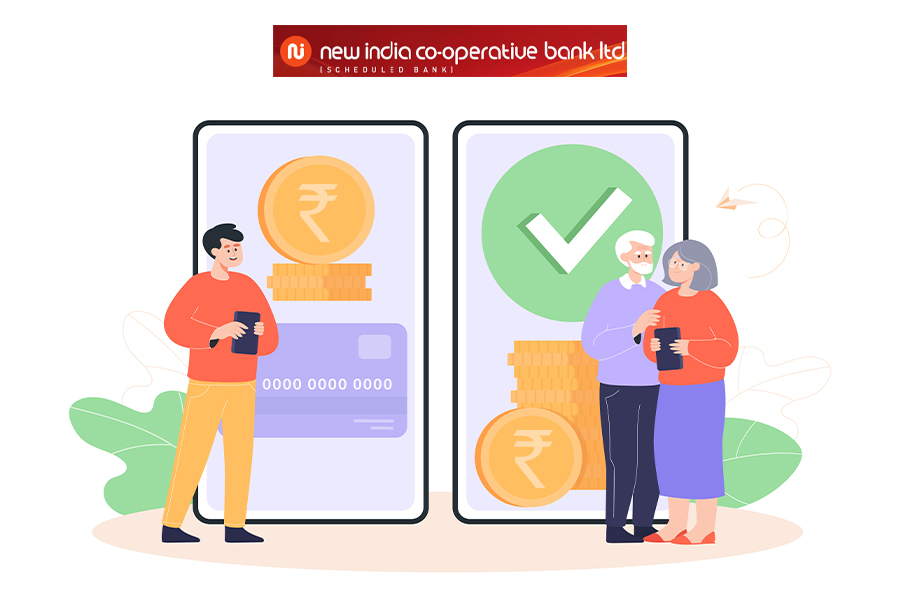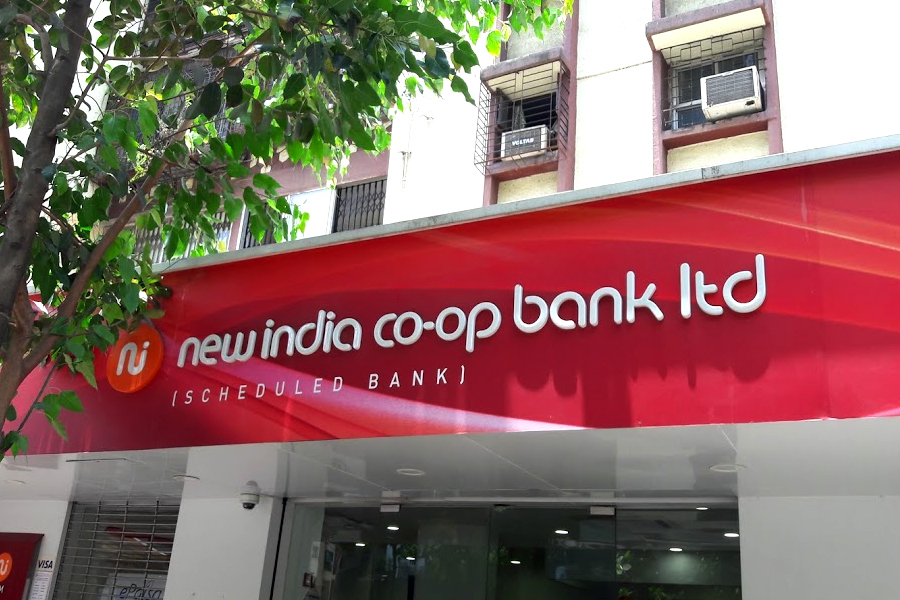 New India Co Operative Bank IFSC Code and MICR Code
New India Co Operative Bank IFSC Code and MICR Code
Find New India Co Operative Bank IFSC Code, MICR Code and branch details for NEFT, RTGS & IMPS transactions.
 New India Co Operative Bank IFSC Code and MICR Code
New India Co Operative Bank IFSC Code and MICR CodeFind New India Co Operative Bank IFSC Code, MICR Code and branch details for NEFT, RTGS & IMPS transactions.
 New India Co Operative Bank IFSC Code Finder - Select Your State
New India Co Operative Bank IFSC Code Finder - Select Your StateNew India Co-Operative Bank has thirty branches, with a head office in Kandivali West, Mumbai. The Bank offers a plethora of financial services, including internet banking, mobile banking, passbook, and more. You have to use the New India Co-Operative Bank IFSC Code to initiate online transactions with the Bank.
NICB was established in 1968 as Bombay Labour Co operative Bank Ltd. It was later renamed New India Co-Operative Bank. It became a Scheduled Bank in 1990 and achieved multistate status in 1999. The Bank was rebranded and revamped with the latest technology in 2009. It began offering internet banking services in 2010.
The Reserve Bank of India (RBI) has designed a coding system to identify the individual bank branches in the country. These codes are known as IFSC and MICR codes. The IFSC code is used for online fund transfers like NEFT, RTGS, and IMPS. The MICR code is used for cheque transactions.
In this article, we’ll find out the IFSC and MICR codes of NICB and read about them in detail. We’ll also learn where and how to find the codes to initiate online money transfers. Finally, we will read about NEFT, RTGS, and IMPS.

Indian Financial System Code or IFSC is an 11-character unique code allotted by the Reserve Bank of India to every bank branch in the country. The code is categorized into three parts, where the first four characters are the bank code, and the fifth character is always a zero (0).
The remaining six characters are the branch code. The branch code can be alphabets, numbers, or a combination of both. For example, the New India Co-Operative Bank Kandivali Branch IFSC Code is NICB0000020 for the head office located at Shivam Chs Ltd. Nr.charkop Village, Kandivli (W), Mumbai. Here,
The IFSC code is used for online fund transfers through NEFT, RTGS, and IMPS. The banking system uses the code to correctly identify the bank branch when transferring money from one account to another. The IFSC code eliminates discrepancies in online transactions and makes the process seamless.
Using the correct IFSC code will ensure that the money to send is credited to the right bank account. What will happen if the IFSC code is incorrect? The transaction can still be successful if both accounts belong to the same branch.
The transaction will fail if the IFSC code and the account number don’t match. The money will be credited back to your account in a few business days. However, if the IFSC code and the account number match, the amount will be sent to another person’s bank account. It is necessary to know the IFSC code of the beneficiary’s Bank before initiating an online fund transfer.
Magnetic Ink Character Recognition Code is a 9-digit distinct code printed at the bottom of the cheques using MICR technology. The MICR code is also allotted by the RBI but is limited in its role. It is used to validate the authenticity of a cheque during Electronic Clearing System (ECS) processing.
The MICR code of New India Co-Operative Bank is 400085020. The code is divided into three parts, where
Unlike the New India Co-Operative Bank IFSC Code, the MICR code is not mandatory for all bank branches. Some branches don’t have a MICR code and process cheques manually. It takes more time to complete manual transactions.
MICR code speeds up cheque clearing by verifying the credibility of the cheque by comparing the details to the banking database. This code is used by the banks and not customers. You don’t need to mention the MICR code of the branch for online transactions.

The banking codes are important for various domestic and international transactions (SWIFT code is used for international wire transfers). But where and how can you find them? Luckily, there are different ways to find the IFSC code online and offline. The online methods can be used by anyone. But the passbook and chequebook can be accessed only by the beneficiary.
Let’s have a look at the different ways to find the New India Co-Operative Bank IFSC Code to send money through NEFT, RTGS, and IMPS. We’ll start with the simplest method first.
Online search tools are highly convenient and easy to use. Find Your Bank is a free and reliable website where you can find the IFSC and MICR codes of any bank branch in the country.
Enter the URL in your web browser: https://findyourbank.in/
The Find, Your Bank website has a form on the home page. Fill in the details using the drop-down list to get the banking codes and other information about the branch. The webpage will reload after every selection.
The page will provide the name, address, and contact information about the bank branch, along with the IFSC, MICR, and SWIFT (if applicable) codes. You can also download the Find Your Bank Mobile App on your smartphone by searching for it in Play Store. The app is free to use.
Account-holders can apply for a chequebook after opening a bank account. The first page of the chequebook contains the IFSC and MICR codes of the bank branch. Each cheque also has the codes printed on them. The IFSC code is printed at the top of the cheque beside the Bank’s logo. The MICR code is printed at the bottom beside the cheque number.
The passbook is used to record all the transactions that happen in a bank account. Every account holder is provided with a passbook after opening an account. The first page of the passbook carries the account holder’s name, address, account number, and customer ID, along with the branch address, contact number, IFSC code, and MICR code.
The NICB Bank’s Official Website will have the necessary information about the branches, addresses, and other relevant information. Customers with net banking and mobile banking facilities can access their accounts online to find the IFSC code of the bank branch.
Another easy method to get the Bank’s IFSC and MICR codes are by calling customer care. Anyone can contact customer support and get the banking codes. You don’t need to be an account holder or share confidential information like passwords or PINs.

We cannot deny the convenience and ease of using online money transferring methods like NEFT, RTGS, and IMPS. The Indian banking system has various online payment methods that make it a simple job to send money from one account to another.
Payment methods like NEFT, RTGS, and IMPS can be used through net banking, mobile banking, and directly from the bank branch. Customers without net banking accounts can visit the branch to make online payments.
The Bank charges a transaction fee for NEFT and RTGS transactions made from the branch. The New India Co-Operative Bank IFSC Code is a must to send money to an account with the Bank. Let’s look at these online fund transfer methods in detail.
NEFT or National Electronic Fund Transfer is a highly popular and most preferred online fund transfer method for domestic transactions. NEFT uses DNS (Deferred Net Settlement) system that processes the transactions in batches. It may take around two hours for your transaction to be completed.
NEFT payment can be used at any time and on any day. It is available 24*7*365 and can be any number of times per day. There is no minimum or maximum limit on an NEFT transaction. However, the transactions are charged based on the amount sent.
Transaction charges for NEFT payments are:
You need the following details to initiate an NEFT transaction:
RTGS, or Real-Time Gross Settlement, is a nationwide secure payment system used to send huge amounts of money in real-time. It is used for instant fund transfers in case of emergencies and large amounts. RTGS transactions are irreversible once processed.
The minimum limit for an RTGS transaction is Rs. 2 lakh, but there is no maximum limit. The payment will be instantly reflected in the beneficiary’s account. The RTGS network is maintained by RBI to keep it secure.
The transaction charges for RTGS payments are more expensive than NEFT. The charges are as follows:
NEFT and RTGS transactions require the same details.
IMPS, or Immediate Payment Service, was first initiated in 2010 by the National Payments Corporation of India (NPCI). You need to get an MMID (Mobile Money Identifier) from the Bank by registering your mobile number for IMPS payments.
IMPS transactions can be sent throughout the day and even on holidays. It is immediate and hassle-free. The minimum amount is Re. 1, and the maximum amount is Rs. 2 lakh. You can initiate an IMPS transaction from your online banking accounts, mobile app, branch, SMS, or ATM.
The transaction charges for IMPS payments depend on the Bank. However, RBI made it clear that the banks cannot charge more than Rs. 25 (+ tax) for an IMPS transaction. You need the following details to initiate the payment.

New India Co-Operative Bank was founded as the Bombay Labour Co-Operative Bank Ltd in 1968 to provide financial assistance to workers and small and medium entrepreneurs. The Bank was inspired by the German Labour Bank, which worked with laborers and businesses.
It was renamed and became New India Co-Operative Bank. NICB currently has thirty branches in Maharashtra and Gujarat. The branches are in cities like Mumbai, Pune, Thane, and Surat. The head office is located in Kandivali West, Mumbai. It became a multistate bank in 1999, nine years after being awarded the Scheduled Bank status in 1990.
NICB has constantly been upgrading its services over the years. It began offering core banking solutions in 2004. The Bank completed rebranding in 2009 and launched its first customer care unit the next year. NICB has been offering internet banking services since 2010. The Bank prides itself on using the latest technology to offer financial services to its customers.
The customer care number of New India Co-Operative Bank is +91-22-66 58 66 58.
The NICB is open from 9 AM to 3 PM on weekdays. The Bank is closed on Sunday, the 2nd and 4th Saturday of every month.
NICB offers SMS balance inquiry services. Send an SMS to 9870977191 for balance and transaction details. Type SBAL (space) followed by your account number for balance inquiry.
Passbook is a mobile application for account holders to access their passbooks electronically. Register your mobile number at the bank branch and get an M-pin to log in and access your electronic passbook through the NICB passbook app.